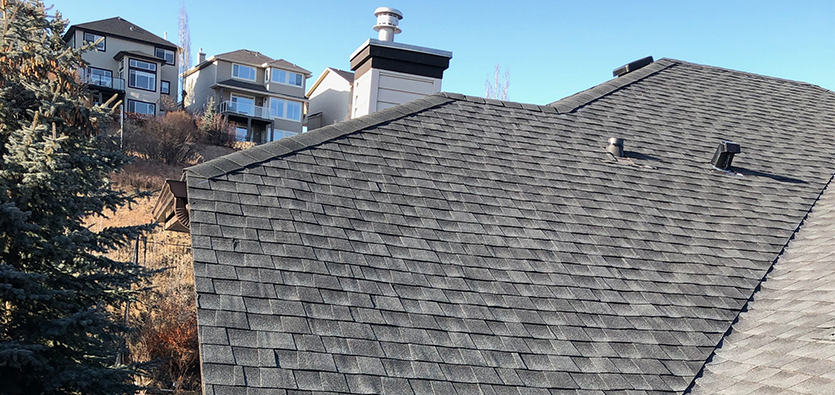In the mid 20th century, the construction and roofing trend of having steep Victorian roofs shifted towards low slope roofs. These roofs allow the house owners to utilise the space right from the bottom to the top of the house. They also lower the heating and cooling costs.
However, the low pitch roofs pose a significant problem that is water accumulation. The steep slope of the earlier roofs allows a well-set path for the water to trickle down and prevent water accumulation, seepages, and leaks. Well, this is not the case with the low slope roofs. If not guided properly, the water can accumulate and damage the roofing materials. The damaged materials allow the water to seep inside and cause roof leaks.
Therefore, you need to be extra careful when choosing materials for your low slope or flat roof. The best material for a flat roof is not the one that is aesthetically pleasing but the one that can withstand harsh weather conditions. Hence, this article explains low pitch roofs, their challenges, and the best materials for their construction in detail.
What Are Low Slope Roofs?
To understand the low pitch roof, we first need to know what the pitch of the roof is? A roof’s pitch is a measurement that tells us about its slope, angle, or slant. It is measured by taking into consideration the vertical ratio (height) of the roof against the horizontal ratio of the roof.
Low slope roofs have slope pitches ranging from ¼:12 to 4:12. These roofs need roofing techniques and materials that support waterproofing instead of water-shedding since the former can not shed water, as in the case of steep roofs. Water shedding techniques sit best for roofs having medium or moderate to a steep slope.
Concerns With Low Slope Roofs
The top concerns associated with low slope roofs include;
Water Pooling And Moisture
A low slope roof without a proper drainage system can form water pools in the divots of the roof. These water pools can deteriorate the roofing materials, resulting in the need for expensive repairs and early replacements.
Additional problems caused by water pooling and moisture include;
- Pooling adds weight to the roof and burdens the basic structure.
- Pooling water can easily seep into the weaker parts of the roof compared to moving water.
- Pooling threatens the integrity of the roof.
- The roof surface can corrode as a result of a recurring freeze and thaw of accumulated water in winter.
Wind Issues
Continuous exposure to strong winds weakens the roof and increases the impact of snow, rain, and hailstorms. Moreover, winds impact low slope roofs by the downward and uplift uneven forces. This leads to the development of wind inflation, wind scoring, and differential stress on various parts of the roof.
Impact Damage
Low-pitch roofs can have impact damage depending on the foot traffic, snow accumulation, rain, and flying debris. This can puncture, crack, and damage the roof materials. The damaged roof allows moisture and water to seep, compromising both the integrity and structure of the roof.
The Best Roofing Material For Low Slope Roofs
Low-pitch roofs, if dealt with and maintained properly, can provide uncountable benefits both to the structure and curb appeal of your home. Roofing materials play an important role in determining the efficiency of the low-pitched roof.
Materials that can prove to be the best for low slope roofs are;
Synthetic Roof Tiles
Synthetic roof tiles are the best materials for the low-slope roof. They are lightweight, eco-friendly, and colourful. They depict the appearance of Spanish tiles and cedar shake shingles. They also perform the waterproofing function efficiently.
Single-ply
Another durable low-pitch roofing material is single-ply. It is made of thermoplastics like PVC and is best for reflecting UV lights and offering protection to the roofing material. Single-ply is produced in a specialised factory setting and comes in only white colour for now.
Roll Roofing
Roll roofing is a material formed by mixing asphalt and granules. Roll roofing is installed in the deck of your roof to provide strength and durability.
Rubber Membrane
As the name suggests, this system of securing and waterproofing the low-slope roofs uses rubber components in the roof construction. The rubber membrane is secured on the roof using strong metal anchors and roofing glue.
Nonetheless, the efficiency and effectiveness of the rubber membrane securing depend on the quality of its installation. Therefore, it is recommended that the rubber membrane installation to your low slope roof should be entrusted to professional roofing contractors such as Akron Roofing in Calgary.
Final Word
Although the concerns associated with low-slope roofing often make a person think twice before choosing it as a roofing option, when compared, the benefits outweigh the disadvantages. All you need to do is choose the perfect fit materials to support the water-proofing mechanism of low slope roofs, and you are good to enjoy the space and permanent reduction in utility bills.





